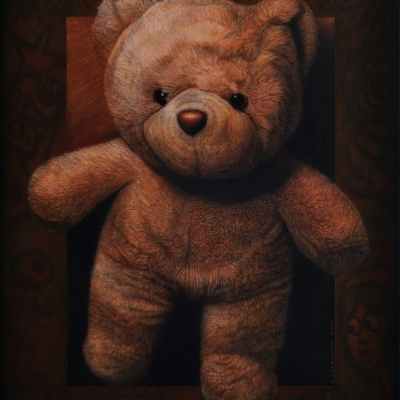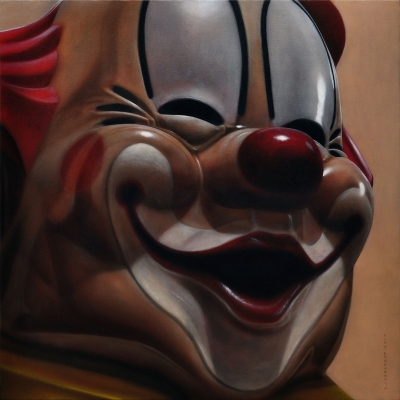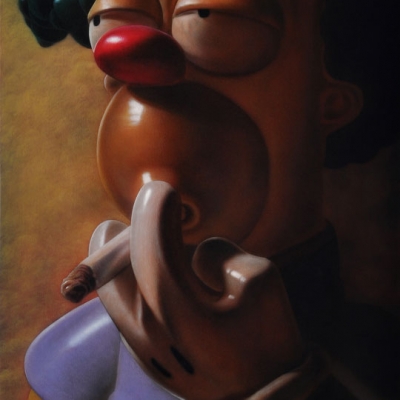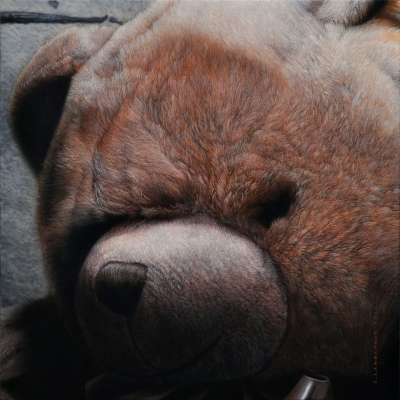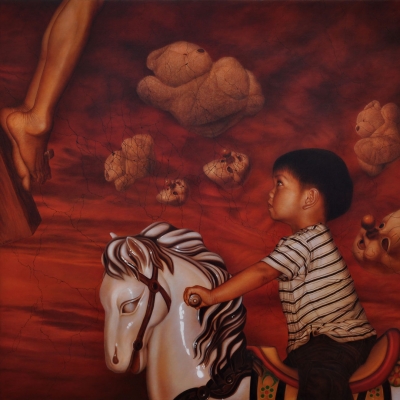E.J. Cabangon loves seeing the world through the innocent eyes of a child, and First Encounter, his 10th one-man exhibit that runs at West Gallery from August 17 to September 11, reflects such childlike impressions. Cabangon need not look further than his home, with kids, Clarice and Chelo, serving as his main inspirations. “It has become a habit of mine to observe things happening around children, especially when it comes to my own, observing how their fresh minds can get refined or corrupted with what they see, hear, or feel. Also, [I have been] trying to compare and relate to [their points of view] with my personal experiences when I was a child,” says Cabangon, who sees his works as products of interconnected stories and events from real-life encounters. In “First Encounter,” a 60” x 72” oil on canvas painting, he recalls what he felt when he first saw the Crucifix hanging in the altar of their parish. “I can’t remember how old I was back then, but as we entered the church, it was kind of dark, as it wasn’t a Sunday. From afar, the altar was so tiny, and of course, as a kid, my attention must have been somewhere else. As we got nearer the altar, my attention was called as I saw this huge cross in front of me. On it was a man hanging, all bloody and looking lifeless. ‘What’s he doing there?’ I screamed inside with fear, as it took me by surprise.” The experience gave the young Cabangon nightmares, as the memory of the sight haunted his mind. “I was wondering how other children reacted during their first encounter. I do hope their experience was much more pleasant than mine.” In “Cool Smoker,” the character, Krusty the Clown, from the animated TV series, “The Simpsons,” served as Cabangon’s template for his first impression upon seeing adults smoking cigarettes, “all looking so cool and hip.” He remembers being impressed by such images, even seeing them as fashionable. Now he realizes how difficult it is to kick the habit and tells his children the long-term consequences of smoking to one’s health. Cabangon hopes to continue creating “a chain reaction of learning and awareness” through his body of work, in which he subtly tells his audience, “What we see can and will influence us in different ways, no matter how we feel about it.”




